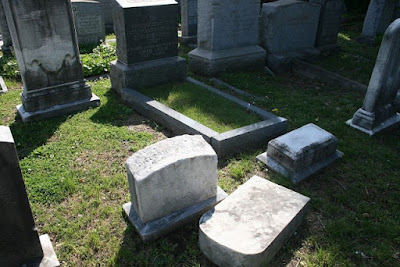What we learned from sports during 1918 flu pandemic
THURSDAY,
JUNE 18, 2020
Then and now: What we
learned from sports during 1918 flu pandemic
WIKIMEDIA/CREATIVE COMMONS
BY RACHEL ALPER | STAFF
LAST UPDATED JUNE 18, 2020
RELATED
POSTS
Pandemic could spell financial trouble for college sports12 yards apart: Is winter football feasible?Athletes must utilize their platforms for social justice
A little more than 100 years ago, baseball legend Babe Ruth went to a
crowded public beach. He went swimming with his wife, drank some beer and had a
picnic. From this seemingly casual public excursion, he ended up catching the
Spanish flu, which he would then beat, catch again and beat again.
As the
COVID-19 pandemic continues to ravage the world, sports leagues everywhere have
been grappling with the impossible question of when they should return to live
play. And although it may seem like it, this situation isn’t entirely
unprecedented.
The 1918
Spanish flu pandemic lasted through 1919, killing an estimated 50 million
people worldwide and infecting up to one third of the population. It came
in three waves and spread easily through the global movement of troops fighting
World War I.
Competitive
sports played a role in both the war and the pandemic. Beginning in the
early 20th century and during WWI, sports built up morale and military
preparedness in the United States. This ended up being a double-edged
sword, as this source of growing entertainment also helped to spread the
deadly Spanish flu.
Three
popular sports and their reactions to the Spanish flu show us that sports (and
specifically sports crowds) are a breeding ground for disease spread — and that
every precaution available should be taken before returning to play as usual.
Baseball
Despite
some players getting sick during spring training, baseball went ahead with
the season due to fear of lost revenue, with players, umpires and coaches alike
all wearing masks.
After
recovering from his first bout with the flu, Ruth guided the Boston Red Sox to
a World Series victory shortly before falling ill and recovering a second
time. The Red Sox beat the Cubs in Game 6 of the World Series, an event
many attribute to be one of the initial spreaders for the second
wave, which killed nearly 5,000 people in Boston alone. This would be
the Red Sox’s last World Series victory for 86 years.
The 1918
season did end up getting cut short by a month, but only because baseball was
considered a nonessential job and players were drafted into the war effort, not
because of concerns over the flu.
Several
major and minor league players, as well as one umpire, died of the flu, serving
as a reminder that no one — not even the powerhouse that is U.S. baseball —
leaves unscathed. However, the sport persevered and returned in 1919, with
unexpectedly strong attendance.
Football
College
football, one of the most popular sports in the United States at the time
alongside baseball, played a season during the Spanish flu pandemic. Also like
baseball, the football season was a shortened one. Due to the second (and
deadliest) wave of the flu, college campuses in fall 1918 were closed and
cities were placed under quarantine, meaning that crowds in attendance at football
games wore masks and were smaller than usual.
The Cal
football team had a fairly strong season in 1918, going 6-2, a highlight being
a win against rival Stanford. There was no clear national champion that year,
as constantly changing schedules meant not all teams played the same number of
games.
Ultimately,
the college football season was greatly affected by both the pandemic and the
war, and arguably even more affected than baseball was.
Hockey
In 1919,
the NHL was only 2 years old, and by the time the Stanley Cup Final rolled
around in March 1919, concerns over the flu had largely faded. The flu wasn’t
making the front pages anymore, and people felt ready to move on with their
lives.
But after
five games of the series between Montreal and Seattle, news reports began to
surface that the players were in poor condition. It was soon announced that the
sixth game was canceled, after several players were hospitalized. A few days
later, player Joe Hall died of the flu. An attempt at a triumphant return
to sports had resulted in tragedy.
Flash
forward to June 2020, and the NBA has planned a tentative return to play
for July 30. NHL teams will return to training camp July 10, and college
football players have returned to campus for voluntary workouts, despite
reports of positive COVID-19 cases.
As sports
leagues start to plan their returns amid the coronavirus pandemic, if only one
thing can be taken away from the 1918 flu pandemic, it should be this: Don’t
rush it. Sports can be exciting, uplifting and entertaining, but only if
they’re safe.
Rachel Alper writes for Bear Bytes.
Contact her at ralper@dailycal.org.

Comments
Post a Comment